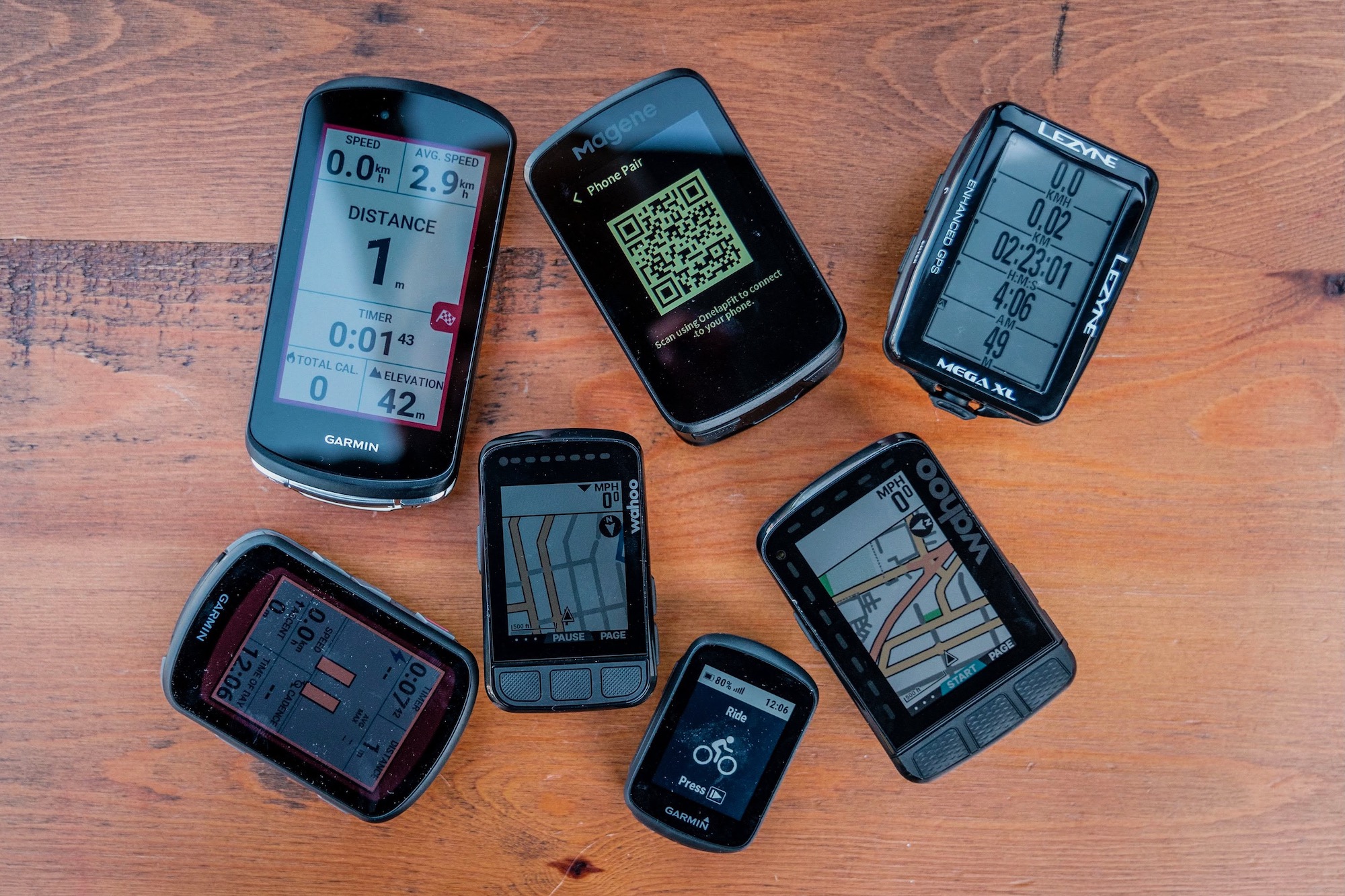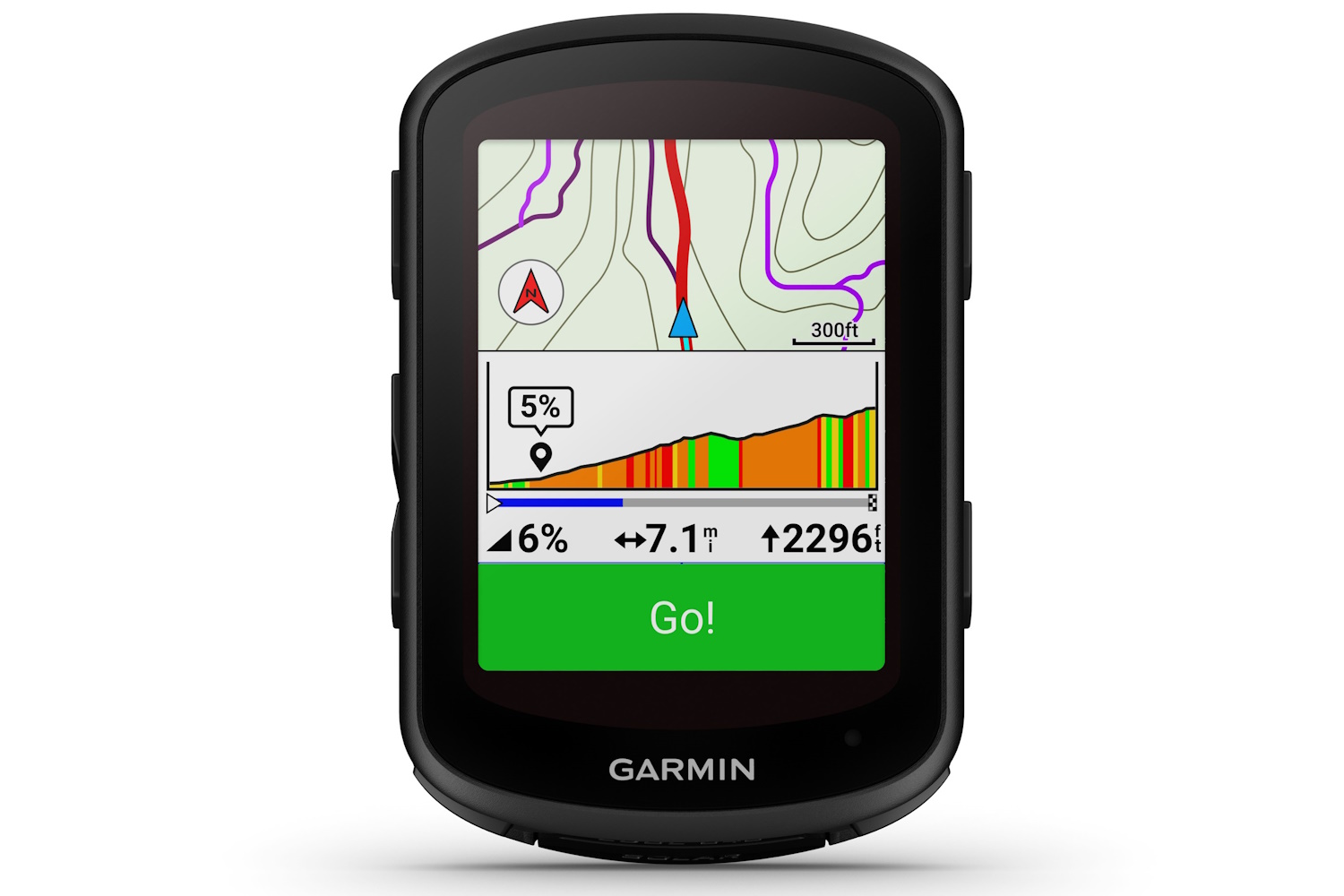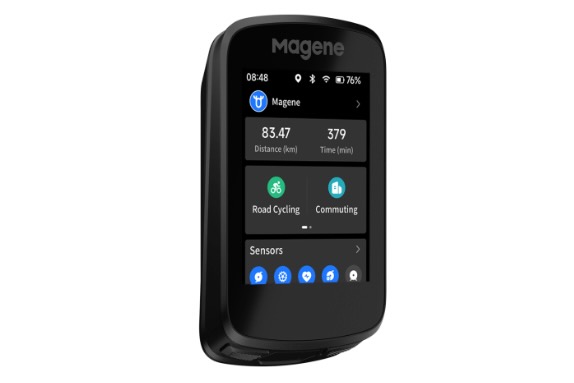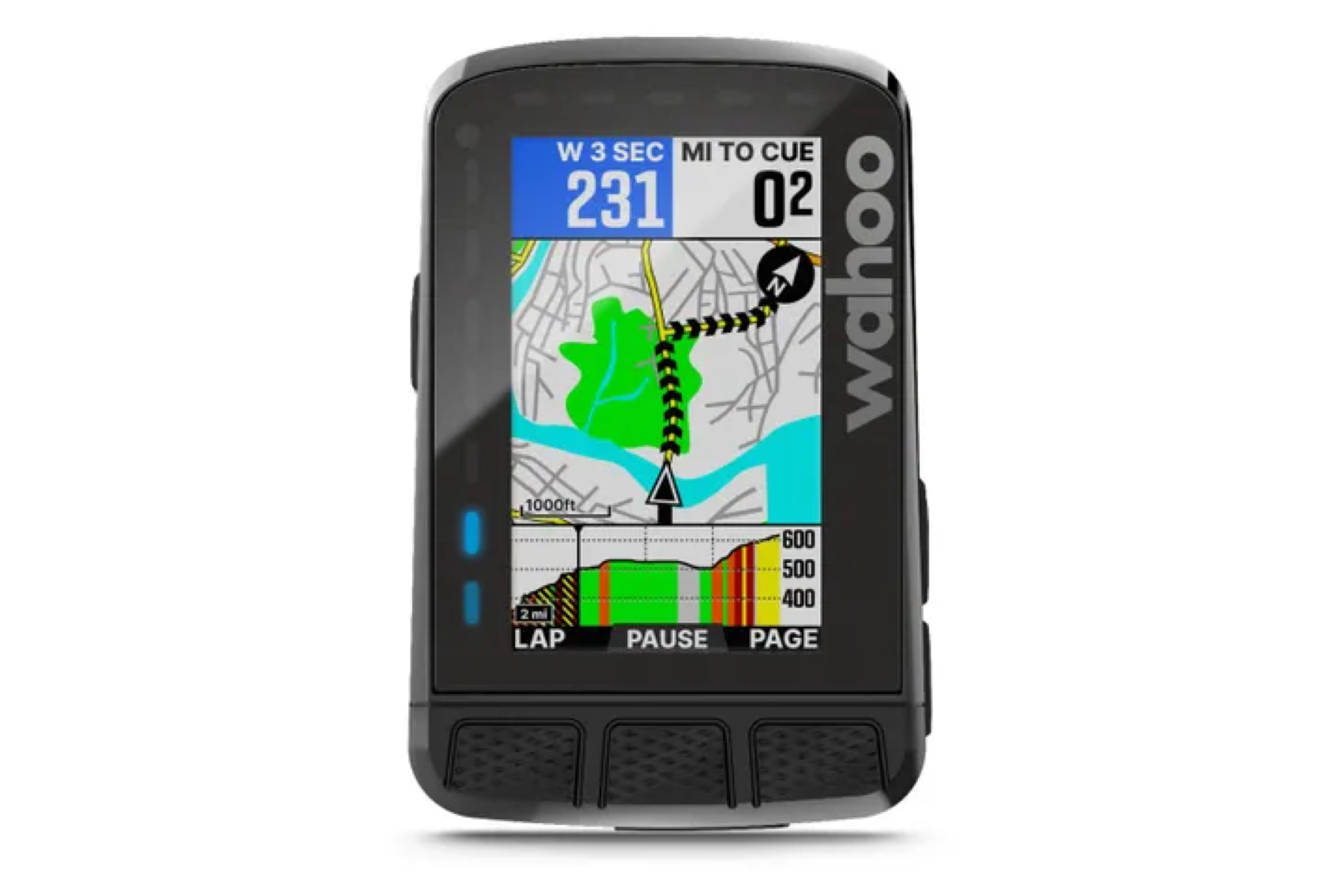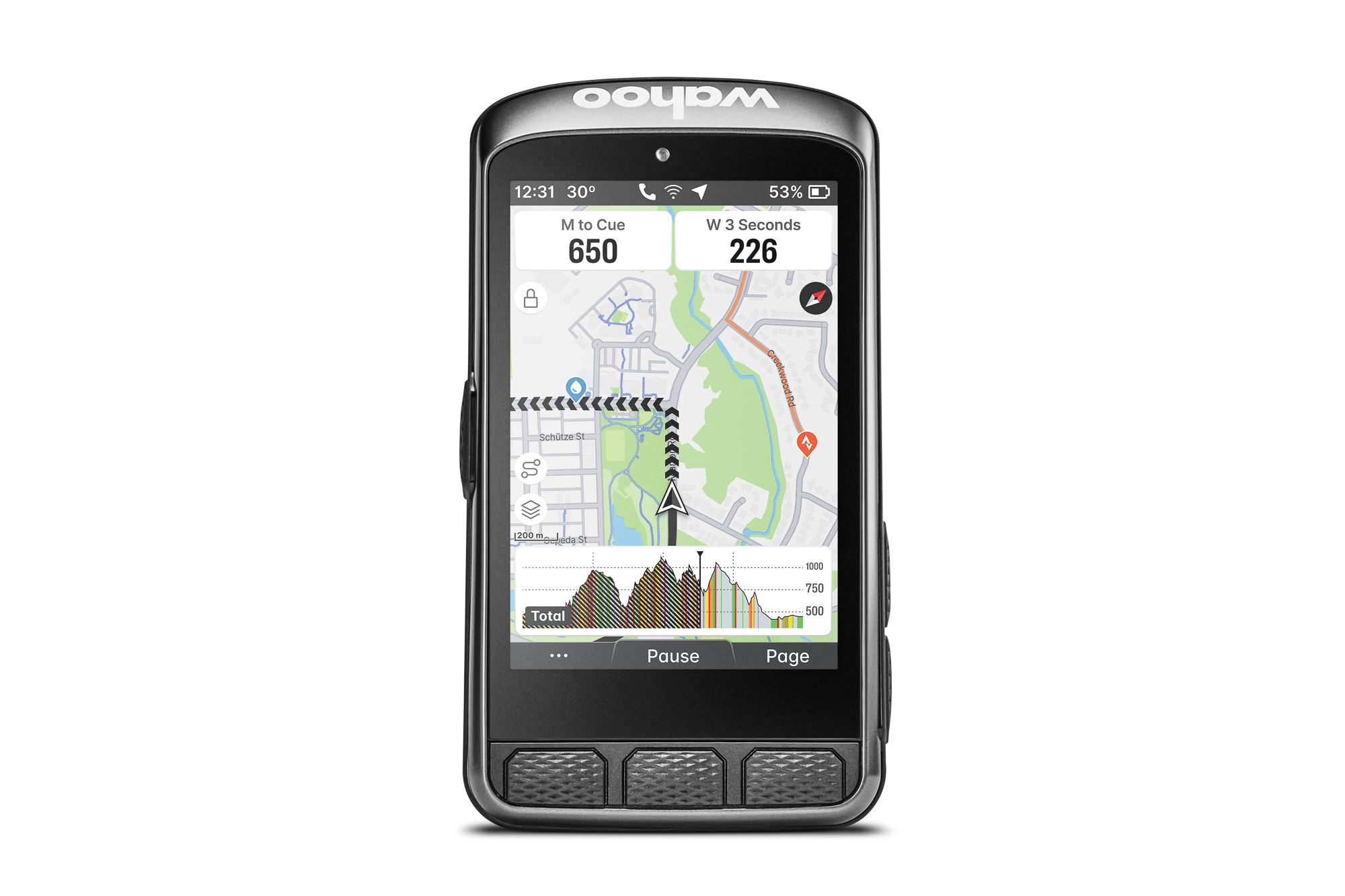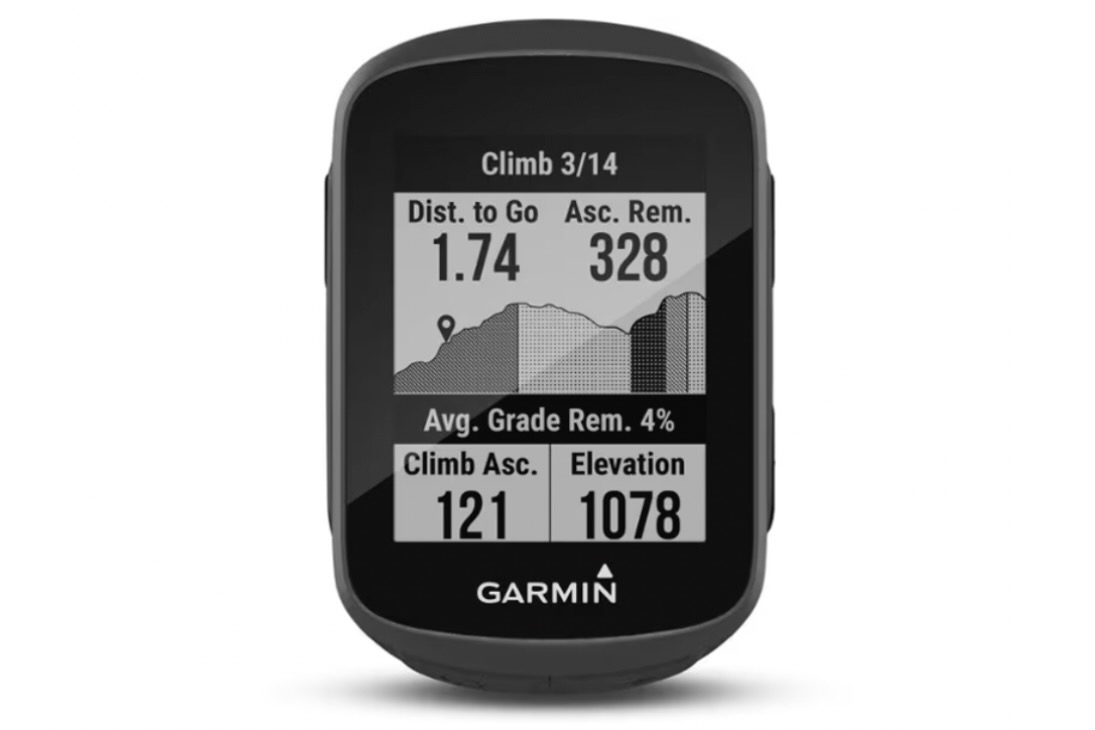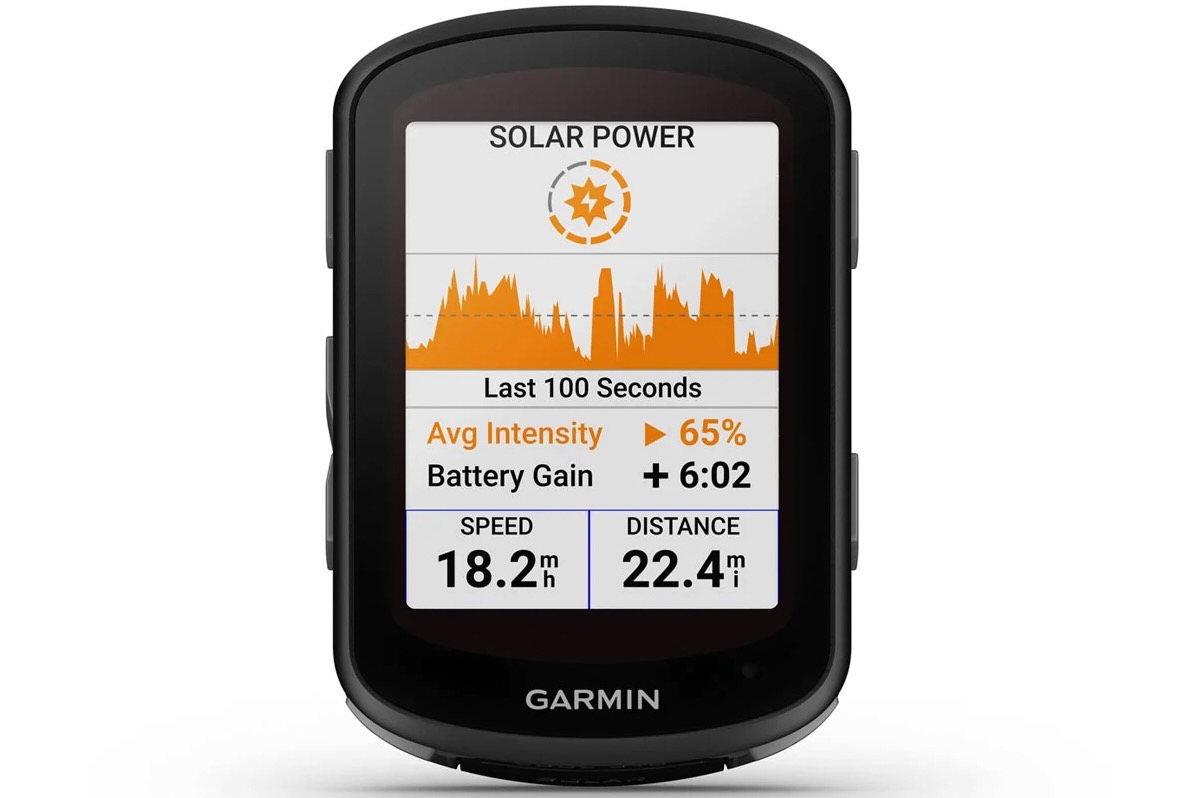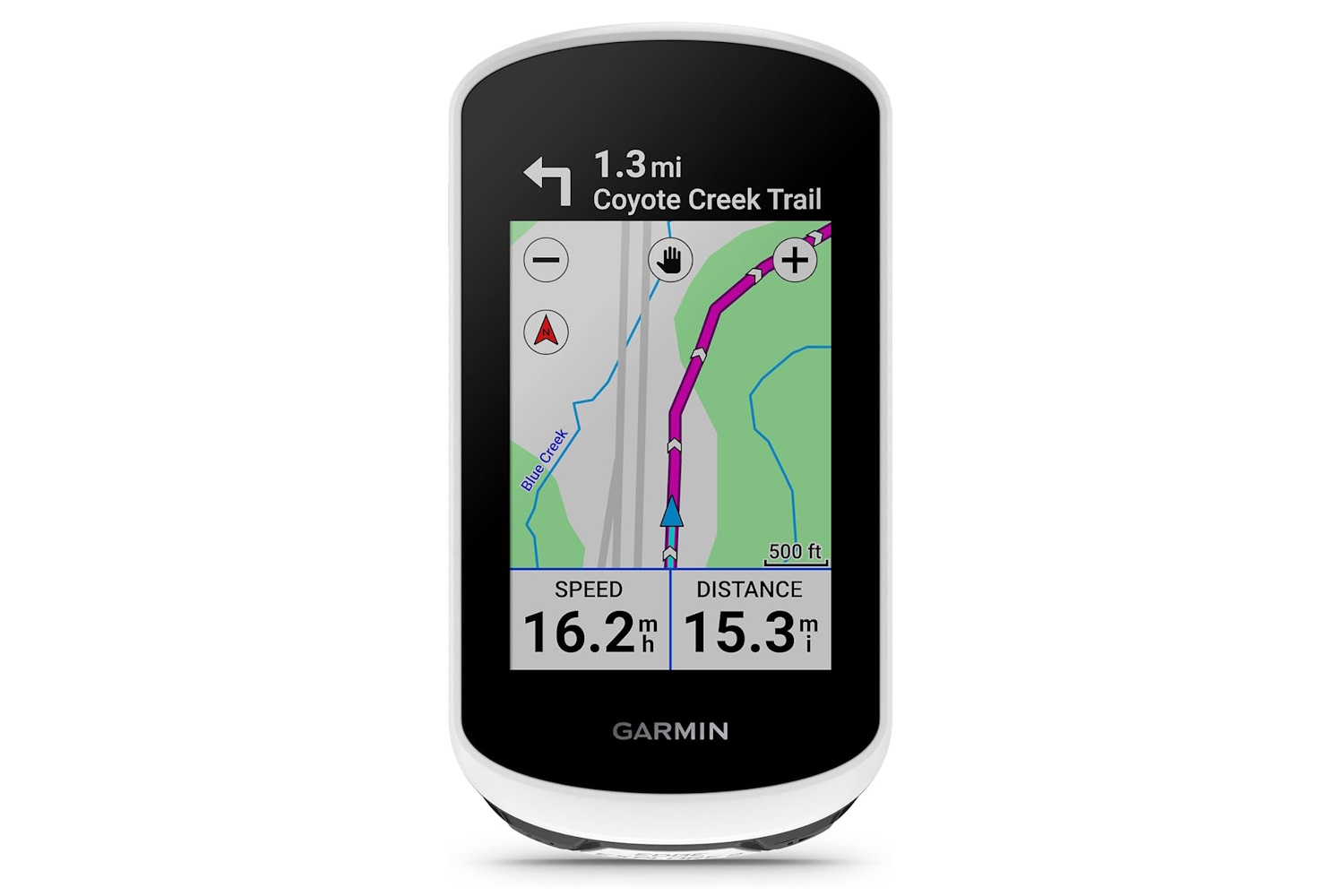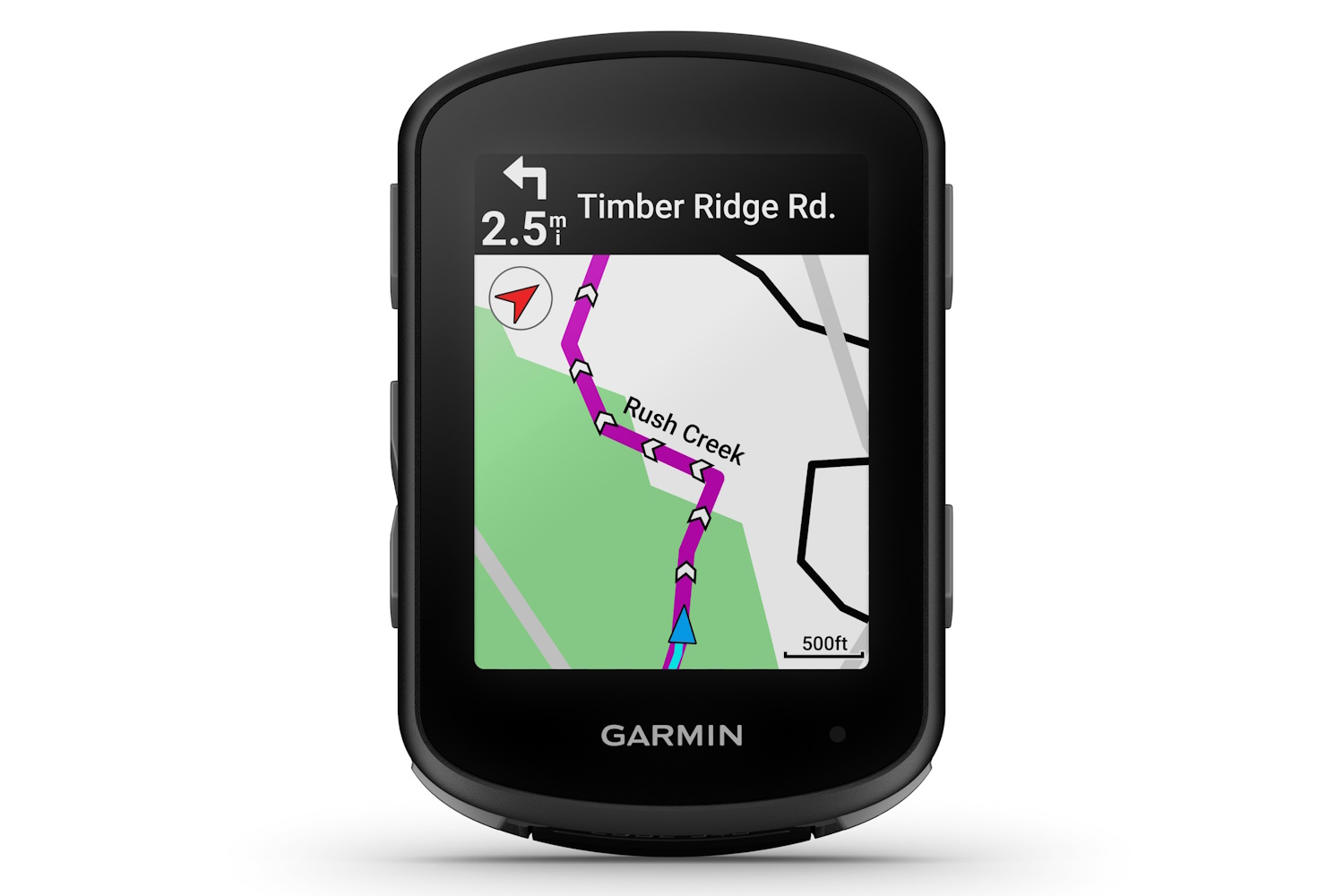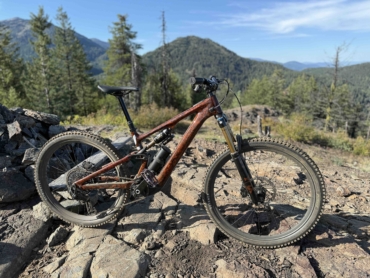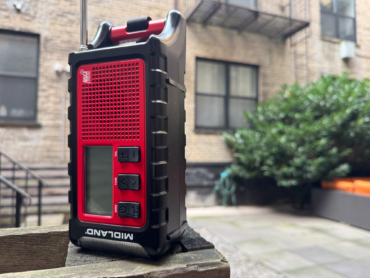Bike computers are useful gadgets for many different reasons. From ride and data tracking to training, navigation, or all of the above, modern bike computers can do it all.
Today’s cycling computers range from wildly expensive GPS-enabled and wirelessly connected devices resembling smartphones to simple units that show basics like speed, distance, and time. With the number of options on the market today, however, choosing the right one for your specific needs can be overwhelming.
We’ve been testing cycling computers since March 2021. To date, we’ve tested over 25 of the best cycling computers available. In that time, we’ve established some important test criteria and created an accessible buying guide to help you choose the best option for your riding needs, whether you’re a regular commuter, up-and-coming racer, long-distance rider, or anyone in between.
Editor’s Note: This guide was updated on December 13, 2024, with the addition of the new Wahoo ELEMNT Ace, the Garmin Edge 540 Solar, and the budget-friendly Garmin Edge 130 Plus and Magene C606.
The Best Bike Computers of 2025
Garmin Edge 840 Solar
- Battery life: 32 hours w/o solar; up to 60 hours with solar charging
- Screen size: 2.6" diagonal
- Weight: 85 g
- Connectivity: Bluetooth, ANT+, and Wi-Fi
- Satellites: GPS, GLONASS, Galileo
- Screen type: Color touchscreen, solar glass
- Interface: Touchscreen, buttons
Pros
- Superior battery life
- Android and iOS compatibility
- Tons of data fields
- Color-coded and extensive mapping
- Waterproof
Cons
- Expensive
- Setup and customization can be confusing
Magene C606
- Battery life: Up to 25 hours
- Screen size: 2.8" diagonal
- Weight: 105 g
- Connectivity: WiFi, Bluetooth 5.0, ANT+
- Satellites: GPS, GLONASS, Galileo, Beidou
- Screen type: Color touchscreen
- Interface: Touchscreen, buttons
Pros
- Great battery life
- Great navigation experience
- Affordable
- Excellent display
Cons
- No climbing display
- Possible Android data import/export issues
Wahoo ELEMNT ROAM V2
- Battery life: 17 hrs.
- Screen size: 2.7" diagonal
- Weight: 94 g
- Connectivity: Bluetooth, ANT+, WiFi
- Satellites: GPS, GLONASS, Galileo, Beidou, QZSS, SMAS, NavIC
- Screen type: Color Gorilla Glass
- Interface: Buttons
Pros
- Waterproof
- Easy to set up and use
- Versatile
- On-demand route navigation
- Long battery life
Cons
- Smartphone necessary
- No touchscreen
Garmin Edge 1040 Solar
- Battery life: 35-180 hrs.
- Screen size: 3.5" diagonal
- Weight: 133 g
- Connectivity: Bluetooth, ANT+, and Wi-Fi
- Satellites: GPS, GLONASS, Galileo
- Screen type: Color touchscreen, solar glass
- Interface: Touchscreen, buttons
Pros
- Impressive battery life
- Solar charging ability
- Smart training functionality
- Excellent navigation
Cons
- Price
- Large size and moderate weight
- Garmin app isn't our favorite
Wahoo ELEMNT Ace
- Battery life: 30+ hours
- Screen size: 3.8" diagonal
- Weight: 208 g
- Connectivity: Bluetooth 5.0, ANT+, and Wi-Fi
- Satellites: GPS, GLONASS, Galileo
- Screen type: Color touchscreen TFT
- Interface: Touchscreen, buttons
Pros
- Industry-first measurement and analysis of air pressure and its effects on groundspeed
- Wide display area makes navigation easier
- Doesn't lack in any feature or measurement
- Touchscreen, physical buttons, and Wahoo firmware makes menu navigation much easier than Garmin
Cons
- Large form factor
- Heavy for a high-end bike computer
- New air pressure data set/calibration/analysis most likely needs refinement in the short-term
CatEye Quick
- Battery life: 365 hrs.
- Screen size: 3.6" diagonal
- Weight: 24 g
- Connectivity: Wireless wheel sensor
- Satellites: N/A
- Screen type: Black & white LCD
- Interface: Buttons
Pros
- Sleek design is minimal and removable
- Long battery life
- No wires
- Provides just the basic ride info
- Affordable
Cons
- Requires speed sensor and spoke magnet to function
- Back-end programming is complicated
- No GPS tracking
Sigma Rox Evo 11.1
- Battery life: 18 hrs.
- Screen size: 1.7” diagonal
- Weight: 55 g
- Connectivity: Bluetooth, ANT+
- Satellites: GPS, GLONASS, Galileo
- Screen type: Color
- Interface: Buttons
Pros
- Affordable
- Easy setup & integration
- Fully featured
- Pre-loadable maps & profiles
- Highly integrative (indoor training)
Cons
- No touchscreen
- Requires 3rd party app to create & upload maps
- Smartphone necessary
- Battery life: 12 hours
- Screen size: 1.8" diagonal
- Weight: 33 g
- Connectivity: Bluetooth, ANT+
- Satellites: GPS, GLONASS, Galileo
- Screen type: Monochrome transflective
- Interface: Buttons
Pros
- Light — 33 grams!
- Simple — not over-featured
- Aero
- Affordable
Cons
- Better options exist for navigation
- Limited battery life
- Buttons very close together
- Battery life: 32 to 60 hours
- Screen size: 2.6" diag.
- Weight: 85 g
- Connectivity: Bluetooth, ANT+, and Wi-Fi
- Satellites: GPS, GLONASS, Galileo
- Screen type: Transflective TFT, solar glass
- Interface: Buttons
Pros
- Outstanding battery life
- Solar charging
- Moderate size and weight
- Excellent training and navigation features
Cons
- Clunky, idiosyncratic user interface
- Garmin app could be better
- Battery life: 16 hrs.
- Screen size: 3" diagonal
- Weight: 104 g
- Connectivity: Bluetooth, ANT+, and Wi-Fi
- Satellites: GPS, GLONASS, Galileo
- Screen type: Color touchscreen
- Interface: Touchscreen, buttons
Pros
- Android and iOS compatibility
- Excellent navigation
- Color-coded and extensive mapping
- E-bike compatible
Cons
- Bluetooth can be finicky
- Not a dedicated training computer
- Battery life is not as good as others
- Battery life: 48 hrs.
- Screen size: 2.7" diagonal
- Weight: 83 g
- Connectivity: Bluetooth Smart, ANT+
- Satellites: GPS, GLONASS
- Screen type: Monochrome screen
- Interface: Buttons
Pros
- Long battery life
- Versatile
- Easy to use
- Excellent compatibility with the companion app
- Affordable
Cons
- No preloaded maps
- No touchscreen
- Battery life: 20 hrs.
- Screen size: 2.6" diagonal
- Weight: 80 g
- Connectivity: Bluetooth, ANT+, and Wi-Fi
- Satellites: GPS, GLONASS, Galileo
- Screen type: Color
- Interface: Buttons
Pros
- Solid battery life
- Android and iOS compatibility
- Tons of data fields
- Color-coded and extensive mapping
- Waterproof
- Large screen
Cons
- No touchscreen
- Difficult to set up
- Battery life: 15 hrs.
- Screen size: 2.2" diagonal
- Weight: 68 g
- Connectivity: Bluetooth, ANT+, and Wi-Fi
- Satellites: GPS, GLONASS, BEIDOU Galileo, and QZSS
- Screen type: Color Gorilla Glass
- Interface: Buttons
Pros
- Easy setup and use
- Loads of training and navigation integrations
- Aero design with integrated mount
- Waterproof
- Competitive price
- Moderate size and lighter weight
Cons
- Requires a smartphone
- Battery life: 35 hrs.
- Screen size: 2.3" diagonal
- Weight: 56 g
- Connectivity: Bluetooth, ANT+
- Satellites: GPS, GLONASS, Galileo, QZSS, BDS
- Screen type: Monochrome
- Interface: Buttons
Pros
- Full customization and connectivity
- Outstanding real-time GPS
- Plenty of potential for data fields
- Superior battery life
Cons
- No rerouting
- No touchscreen
- Battery life: 320 hrs.
- Screen size: 1.4" diagonal
- Weight: 30 g
- Connectivity: Wired wheel sensor
- Satellites: N/A
- Screen type: Monochrome LCD
- Interface: Buttons
Pros
- Inexpensive
- Easy to use
- Long battery life
Cons
- Wired sensor (fiddly to set up, limited to one bike)
- Disposable batteries
- No data storage
Bike Computer Comparison Chart
| Bike Computer | Price | Battery Life | Screen Size | Weight | Connectivity | Satellites | Interface |
|---|---|---|---|---|---|---|---|
| Garmin Edge 840 Solar | $500 | 32 hrs. | 2.6″ diag. | 85 g | Bluetooth, ANT+, and Wi-Fi | GPS, GLONASS, Galileo | Touchscreen, buttons |
| Magene C606 | $160 | Up to 25 hrs. | 2.8″ diag. | 105 g | Bluetooth 5.0, ANT+, and Wi-Fi | GPS, GLONASS, Galileo, Beidou | Touchscreen, buttons |
| Wahoo ELEMNT ROAM V2 | $400 | 17 hrs. | 2.7″ diag. | 94 g | Bluetooth, ANT+, and Wi-Fi | GPS, GLONASS, Galileo, Beidou, QZSS, SMAS, NavIC | Buttons |
| Garmin Edge 1040 Solar | $700 | 35-180 hrs. | 3.5″ diag. | 133 g | Bluetooth, ANT+, and Wi-Fi | GPS, GLONASS, Galileo | Touchscreen, buttons |
| Wahoo ELEMNT Ace | $600 | 30+ hrs. | 3.8″ diag. | 208 g | Bluetooth, ANT+, and Wi-Fi | GPS, GLONASS, Galileo | Touchscreen, buttons |
| CatEye Quick | $60 | 365 hrs. | 3.6″ dia. | 24 g | Wireless wheel sensor | N/A | Buttons |
| Sigma Rox Evo 11.1 | $160 | 18 hrs. | 1.7” diag. | 55 g | Bluetooth, ANT+ | GPS, GLONASS, Galileo | Buttons |
| Garmin Edge 540 Solar | $400 | 32 hrs. | 2.6″ diag. | 85 g | Bluetooth, ANT+, and Wi-Fi | GPS, GLONASS, Galileo | Buttons |
| Garmin Edge 130 Plus | $200 | 12 hrs | 1.8″ diag. | 33 g | Bluetooth, ANT+ | GPS, GLONASS, Galileo | Buttons |
| Garmin Edge Explore 2 | $300 | 16 hrs. | 3″ diag. | 104 g | Bluetooth, ANT+, and Wi-Fi | GPS, GLONASS, Galileo | Touchscreen, buttons |
| Lezyne Mega XL | $200 | 48 hrs. | 2.7″ diag. | 83 g | Bluetooth, ANT+ | GPS, GLONASS | Buttons |
| Garmin Edge 540 | $350 | 20 hrs. | 2.6″ diag. | 80 g | Bluetooth, ANT+, and Wi-Fi | GPS, GLONASS, Galileo | Buttons |
| Wahoo ELEMNT BOLT V2 | $280 | 15 hrs. | 2.2″ diag. | 68 g | Bluetooth, ANT+, and Wi-Fi | GPS, GLONASS, BEIDOU Galileo, and QZSS | Buttons |
| Bryton Rider 420E | $130 | 35 hrs. | 2.3″ diag. | 56 g | Bluetooth, ANT+ | GPS, GLONASS, Galileo, QZSS, BDS | Buttons |
| CatEye Velo 7 | $30 | 320 hrs. | 1.4″ diag. | 30 g | Wired wheel sensor | N/A | Buttons |
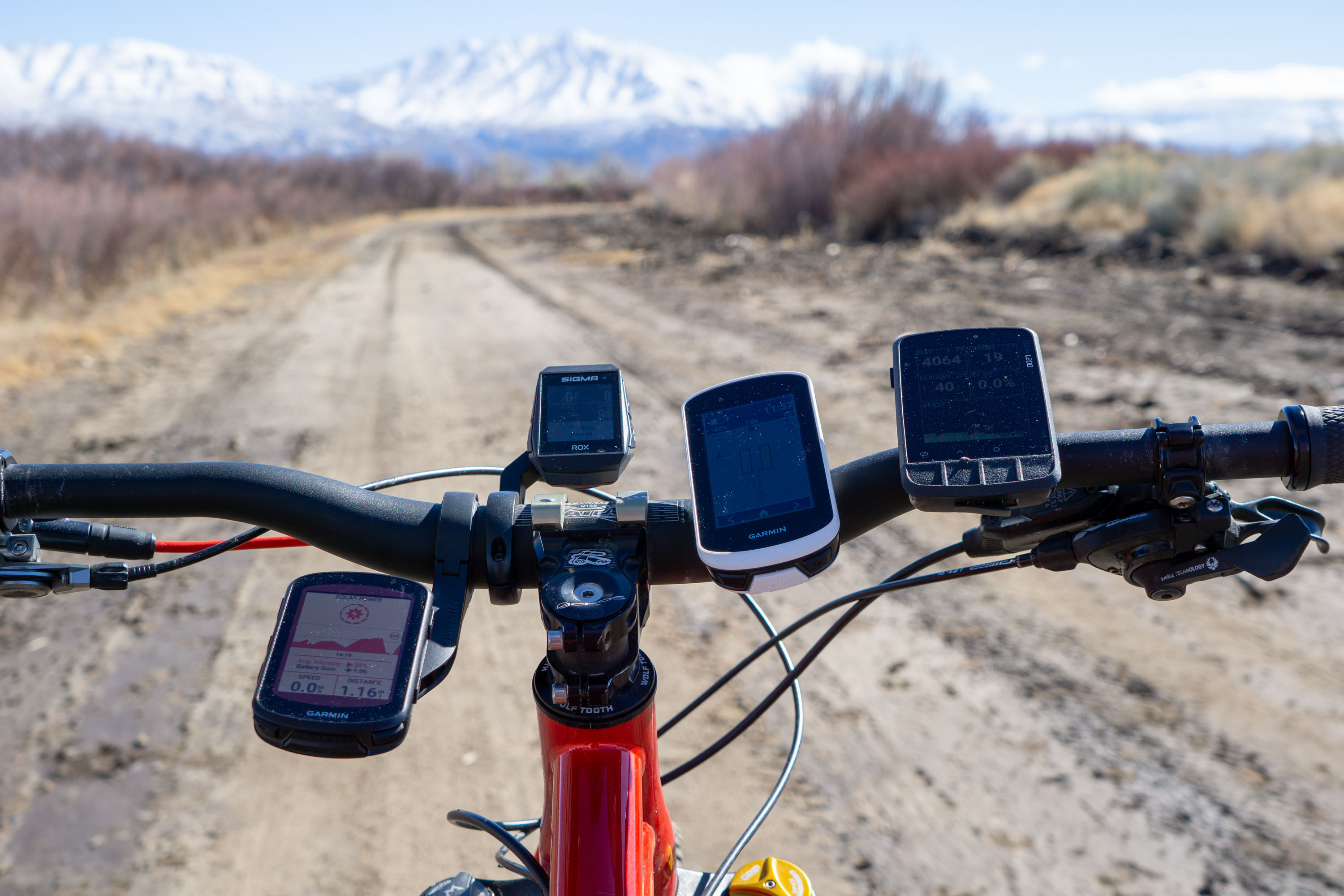
How We Tested Bike Computers
Our team at GearJunkie is composed of former racers, recreational cyclists, folks who bike commute 60+ miles a week, and everyone in between — people who care about fit, finish, and function. Our testers spend their time carefully evaluating new products so that you don’t have to, which translates to more time in the saddle for you. We strive to create thorough, comprehensive, and helpful reviews to help you find the best gear for your individual needs.
Our Expert Testers
Lead tester Paul Mandell has two decades of experience in the saddle as an itinerant racer and recreational rider. He completed his graduate studies in exercise science and studied the critical power model for cycling, meaning that he’s no stranger to testing, training, and racing bikes.
While these days Paul prefers lift-accessed gravity riding and long adventure rides with plenty of descending, he still finds time to get out for the occasional gravel grind or single-track loop in his home base in California’s Eastern Sierra.
Contributing author Bennett Shane also provided his expertise in testing several of the models included on our list. Bennett has been cycling seriously for over two decades and spends an inordinate amount of time in the saddle while testing gear, improving his fitness, and riding just for the fun of it.
A former racer, Bennett has relied on bike computers and connected sensors to deliver performance data, track rides, and monitor his progress for years. While his racing days are behind him, Bennett is still a performance-minded cyclist who enjoys nerding out on his data, and he often uses bike computers for navigation while exploring new areas on his road bike.
Seiji Ishii is GearJunkie’s Cycling Editor, and he constantly tests bikes and all kinds of cycling accessories for reviews. A former road racer and current Masters athlete, Seiji has been cycling for over four decades and has witnessed the evolution of bike computers firsthand. His role as Cycling Editor puts him in a unique position to learn about and test the latest and greatest bike computers, often before they even hit the market.
Our Testing Process
In a world of ever-growing technological advancement, it’s really easy for new gadgets to feel overcomplicated and difficult to use. The first thing we evaluate is ease of use — how much faffing about is required to get from opening the box to heading out for a bike ride? We evaluate each computer on its ease of setup, user interface, user-friendliness, and even companion apps (if applicable).
Once we get things set up and rolling, we can evaluate the actual function of the product. In the case of bike computers, we look at which features are available — standard things like GPS/GNSS navigation and tracking, compatibility with sensors, weather information, start/stop features, and cross-platform compatibility. We examine the display size, resolution, and how easy it is to view maps and data on the screen.
While riding, we also make sure to evaluate the controls — buttons, touchscreen, or both — and the impact they have on the user experience. Are the buttons/screen well made? Is the software clunky or non-responsive?
We also take care to evaluate the value of the computer as we’re testing. What’s the price-point-to-features ratio? Products that score well in the value category will offer many of the same features as more expensive computers but usually in a less refined package.
Finally, we look at fit and finish. Most newer computers on the market today have switched over to the ¼ turn mount, which simplifies things for fit, but we still look to make sure that the mount design is streamlined and secure. Size and weight are also considerations, so we weigh and measure all of the computers to compare them to the manufacturer’s specs.
Tracking rides, performance data, and navigation are important functions of most bike computers, so we take the time to connect to all of the companion apps, sync with Strava, and create routes. We go through the process of using as many of the training and navigation functions as possible to see how well they work, as that has a direct impact on a computer’s functionality and the user experience.

Buyer’s Guide: How to Choose a Bike Computer
What Will You Be Using It For?
One of the first things to consider when choosing the right bike computer is what you’re going to use it for. Technology has advanced quite rapidly in recent years, and bike computers are impressively advanced tools capable of all sorts of things including navigation, outdoor training, indoor training, ride tracking, and more.
Are you a competitive rider or racer seeking to improve your performance through the use of connected sensors, real-time data, or training programs? Are you an adventurer exploring new areas and terrain who can benefit from detailed maps, turn-by-turn directions, and robust navigational features? Or do you just want to track your rides so you can post them to Strava? Perhaps all of the above?
Realistically, most mid to high-end computers are over-featured, and most users won’t need or want to use a lot of the functions they are capable of. Of course, it’s better to have extra features and not need them rather than the other way around. Either way, knowing what features and functions are important to you will help you narrow in on the model that’s right for you.
These days, most GPS bike computers work fairly well for tracking, training, and navigation, but some might work better than others for you depending on your specific needs and preferences.
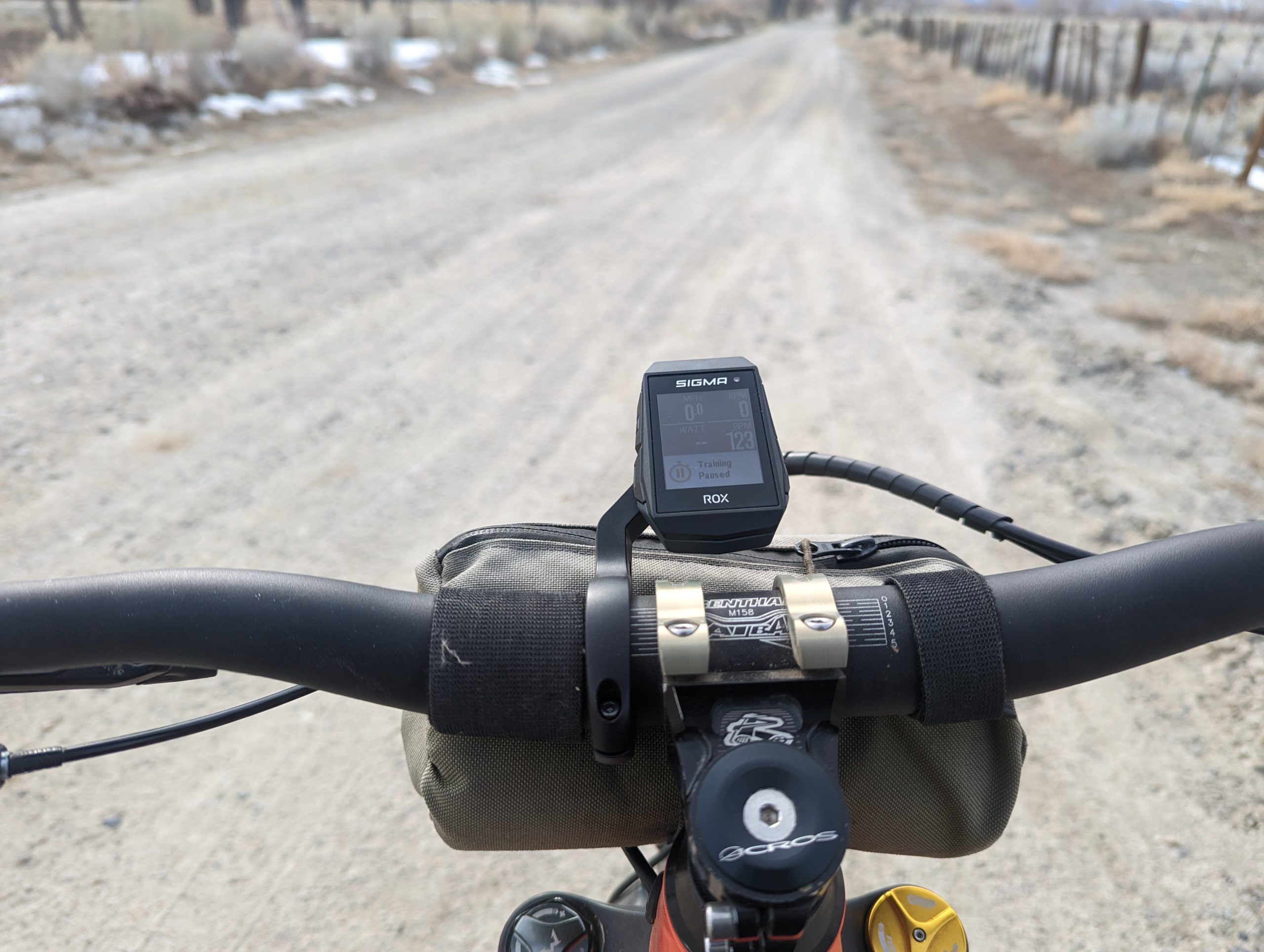
Bike Computer User Profiles
There are a plethora of bike computers to accommodate every type of riding. Do you ride one bike consistently? Or do you rotate through several bikes? If you use several bikes, get a bike computer that allows you to create multiple profiles so you can use the same computer with any of your bikes.
The Roadie: You’re no stranger to the supportive embrace of Lycra, and grinding out your next century is second only to improving your VO2 max. When the road calls, you’ll need a bike computer that’s aimed at long rides and has all of the training stats, sensor integration, and third-party app support built in. At the very least, ensure that your road-cycling bike computer has all of the navigation features you’ll need to get around.
When it comes to performance tracking, it’s hard to rival the comprehensive synthesis that the leading Garmin devices have going on under the hood. Computers like the Garmin Edge 840 Solar churn out a staggering amount of information based on your rides and support Strava, Training Peaks, Komoot, and more. For $100 less, the Wahoo ELEMNT ROAM V2 is another compelling option that includes global maps and plenty of training features.
The Commuter: Whether you’re bumping around town or just jetting into the office, using a bike computer can be a fun way to casually keep track of your weekly mileage. Ease of use should be the name of the game here, and a simple bike computer without too much tech bloat will see you through any traffic jam.
For a real budget pick, the CatEye Quick is about as bare-bones as it gets but still provides the speed and distance info that commuters are looking for. If you want plenty of the functionality of pricier devices while still retaining some of your hard-earned Benjamins, computers like the Magene C606 and the Sigma Rox Evo 11.1 really punch above their price tags.

The Gravel Grinder: Kicking up dust never gets old, and everybody can get behind a little under-biking from time to time. Gravel biking is only growing in popularity, and choosing a bike computer to go with it will mean looking for a device that’s up to the challenge. If your riding often turns into full-out bikepacking, you’ll need a bike computer that has some real legs when it comes to battery life.
For real barebones builds, the Lezyne Mega XL cuts out the faff in exchange for longevity. For those who want it all — plus extended battery life — the integrated solar display face of the Garmin Edge 1040 Solar keeps chugging well past other computers on the list. Its screen and navigation are top-notch, plus it retains all of the Garmin performance-tracking we love.
The Trail Hound: Whipping the steel pony around never gets old, and if “tech” and “flow” are part of your vocabulary, angle for a device that sports more than just a GPS chip — and ideally a full suite of GNSS receivers with dual-band support. This will provide the best satellite reception in traditionally poor coverage areas and dense tree cover.
Many bike computers today also offer third-party support from the Trailforks app, which loads detailed mountain bike trail routes onto your device. You may also want to look for a computer that mounts directly to the bars. Out-front mounts introduce more leverage into the system, and hitting large drops can unnecessarily stress the mount.
The Bryton Rider 420E has five different satellite systems and a barometric altimeter to best track the ups and downs of mountain bike trails — and it fights the good fight for up to 35 hours. Going with the pricey Garmin Edge 840 Solar gets you a solar display face and exceptional battery life. Finally, the Wahoo ELEMNT ROAM V2 can’t be left out, as it sports a tough build that won’t quit on hard trails.
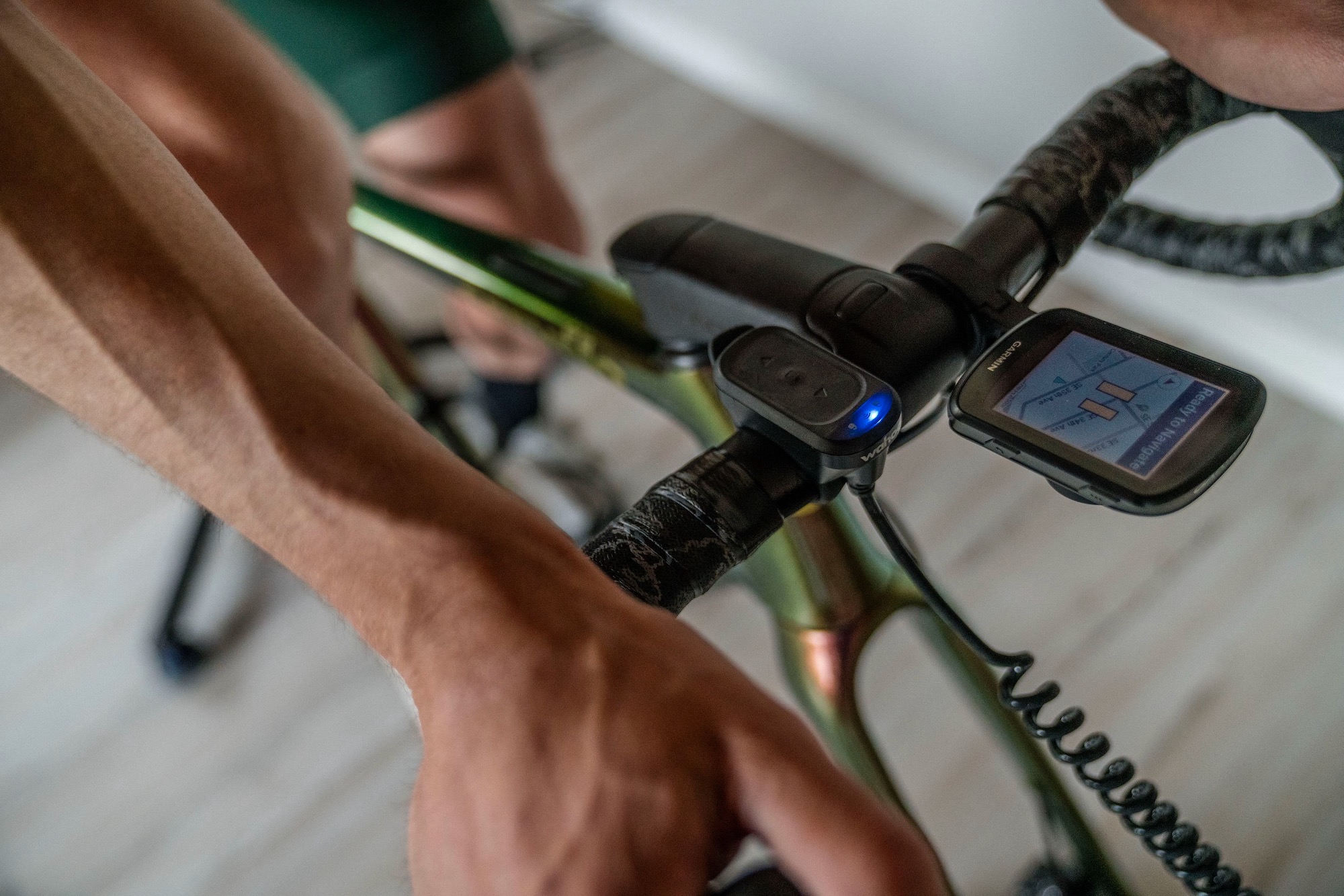
Sensors
Early bike computers were simple devices that made use of wired sensors that were clunky, difficult to adjust, and not very aero. When a small magnet mounted to the spokes of your bike wheel passed a sensor mounted to your fork, a revolution was registered. Few bike computers function this way anymore, but for those seeking one of the simplest computers around, the CatEye Velo 7 is a throwback to simpler times.
Even basic computers have stepped up to wireless technology. The CatEye Quick can only tell you your speed, distance, and times, but at least the wheel sensors is wireless.
Today, a whole host of other wireless sensors exist that provide bike computers with new and exciting feeds of information. It’s easy to create a suite of sensors — heart rate straps, power meters, cadence sensors, and speed sensors — that provide your display unit with everything you want to know while riding. Additionally, many bike computers can be synced with smart trainers so you can control the trainer during structured workouts, etc.
GPS Sensors
Like the chips in handheld GPS devices or your smartphone, modern bike computers make use of the array of global navigation satellites in orbit in order to gain information on speed, distance, and navigation.
It’s important to note that there are a number of different satellite systems currently, and while the U.S.-sponsored GPS is the most broadly used, other systems can offer higher fidelity in different parts of the world.
Some bike computers are also following recent trends in handheld GPS devices, GPS watches, and fitness watches and integrating Dual-Band receiver technologies into their GPS sensors. Dual-band receiver technologies allow more than one satellite to provide information to a device at a time.
This increases the accuracy of the GPS signal and can provide information in zones that have typically been dead zones, like canyons or beneath tree cover.
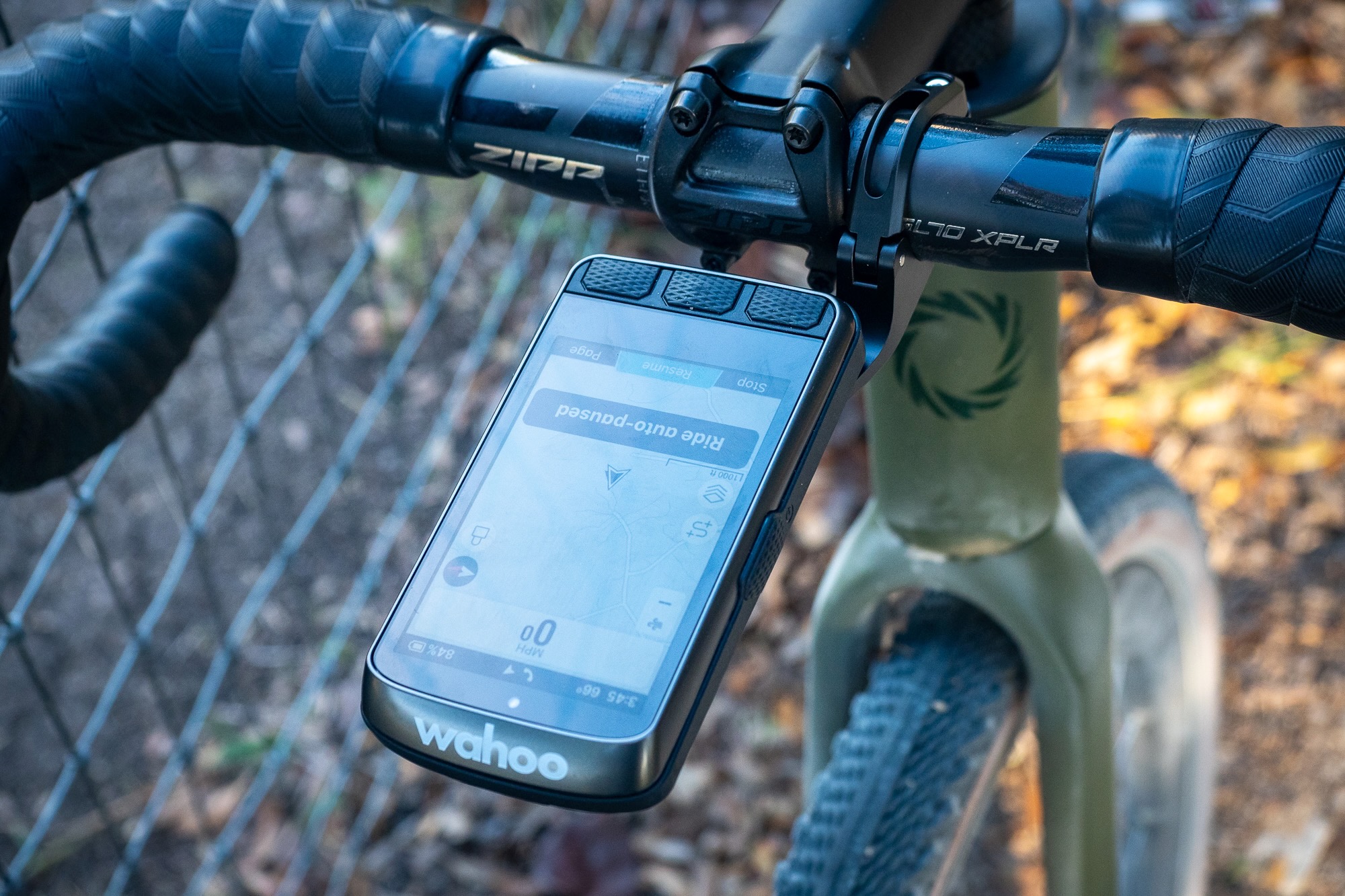
ANT+ Accessories
Simply put, ANT+ is a universal language that allows different electronic devices to speak to one another. Manufacturers will integrate ANT+ into devices that will vacuum up information and display it for easy viewing, like fitness watches, smartphones, and bike computers.
Many different devices today will be ANT+ enabled, including heart rate monitors, cadence sensors, speed sensors, power meters, and even wireless derailleurs and rear-view radars. This can all be a bit overwhelming (and potentially heavy if your bike is festooned with sensors), but it allows riders to pick and choose what information is important to their riding or training.
Some bike computers can be purchased in bundles, like the Garmin Edge 840 Solar, so you can buy the computer along with a suite of ANT+ sensors, like speed, cadence, and a heart rate monitor.
Bluetooth Integration
Of most use in connecting bike computers to riders’ phones, Bluetooth allows for further interactivity through applications. Many bike computers will offer a simple slate of adjustability through the device’s display unit, but much more through the app. Examples include the Garmin Connect app and the Wahoo ELEMNT app.
Select bike computers even allow for the pass-through display of texts and emails from your phone, like the Wahoo ELEMNT ROAM and BOLT.
Wi-Fi
Many modern bike computers are also Wi-Fi capable, which is most useful for data transfers and firmware updates. Instead of needing to plug your device in to transfer data, it can quickly, easily, and often be automatically transmitted via Wi-Fi.

Ease of Setup
Your device’s setup difficulty — or lack thereof — ultimately depends on how many features your computer has and how many you’re going to use. Understandably, a basic computer doesn’t take as much time to set up as a more advanced computer you plan to connect to a few ANT+ devices.
This also relates to each computer’s user interface — touchscreen, buttons, or both — as well as the organization of menus and the usefulness of associated companion apps. In this regard, Wahoo computers do very well. The button controls are intuitive, as are the menu layouts when setting up initially and making any changes.
Wahoo’s companion app (and Lezyne’s) is also well-designed and makes it easy to do much of the setup through your phone. Comparatively, Garmin computers are a bit less straightforward with idiosyncratic menus and organization. Anyone can figure it out; it just takes a bit more time. That said, once set up to your liking, Garmin models are quite easy to use — especially the models with touchscreens.
Setup also includes physically attaching your computer to your bike. Suppose you have more than one bike and plan to regularly mount and dismount your computer.
In that case, the Wahoo ELEMNT ROAM V2 comes with both a standard mount and an out-front mount, making it a very versatile device you can switch back and forth between the mountain and gravel bike. Most computers come with quality mounts these days, and there are loads of aftermarket options available as well.

Navigation
Do you even need a navigation system? If you usually ride on familiar roads, you may not need navigation at all, and a basic cycle computer like the CatEye Quick could suffice.
If you want to plan your routes and even be able to go off track and be rerouted, you’ll want to get a computer with an advanced navigation system like those found on the Garmin and Wahoo models.
Many computers allow you to pre-select or build routes right on the screen. However, some computers require you to build the route in the manufacturer app (or a third-party app like Strava) before uploading it to the unit. This is especially helpful when researching new sectors, planning a new route, or pre-riding a race course.
Some computers, like the Garmin Edge line, offer turn-by-turn navigation similar to the navigation you’d use while driving. Garmin’s computers are especially sensitive to changes in routes and rarely miss a beat during navigation, which includes updating and re-routing in real time.
If navigation is high on your list of priorities, it’s also important to consider screen size. Looking at a map on a tiny screen can be challenging, which is one of the reasons computers like the Garmin Edge Explore 2, the Edge 1040 Solar, and the Wahoo ELEMNT Ace have such large screens. These models can show you a detailed map, navigation prompts, and data fields all at once.
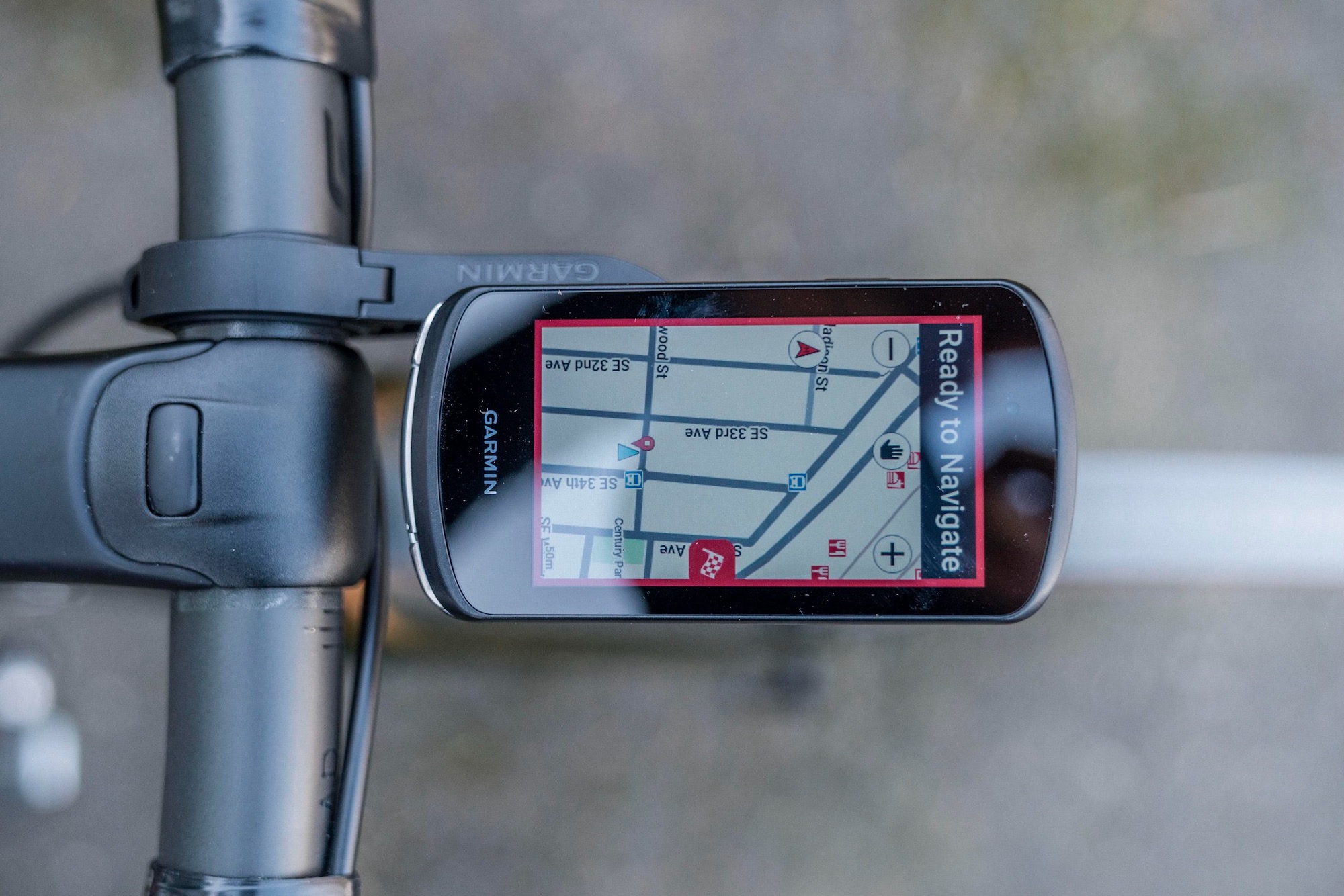
E-Bikes and Bike Computers
As e-bikes are becoming more and more common, computer manufacturers are beginning to offer computers that integrate specifically with e-bikes via ANT+ or the Shimano STEPS system.
The Garmin Edge Explore 2 is one such computer that allows you to monitor your e-bike’s battery life, range, pedal assist, and all of the other standard metrics like speed, distance, cadence, etc. We anticipate that more and more computers will offer e-bike integration and support as technology improves and progresses.
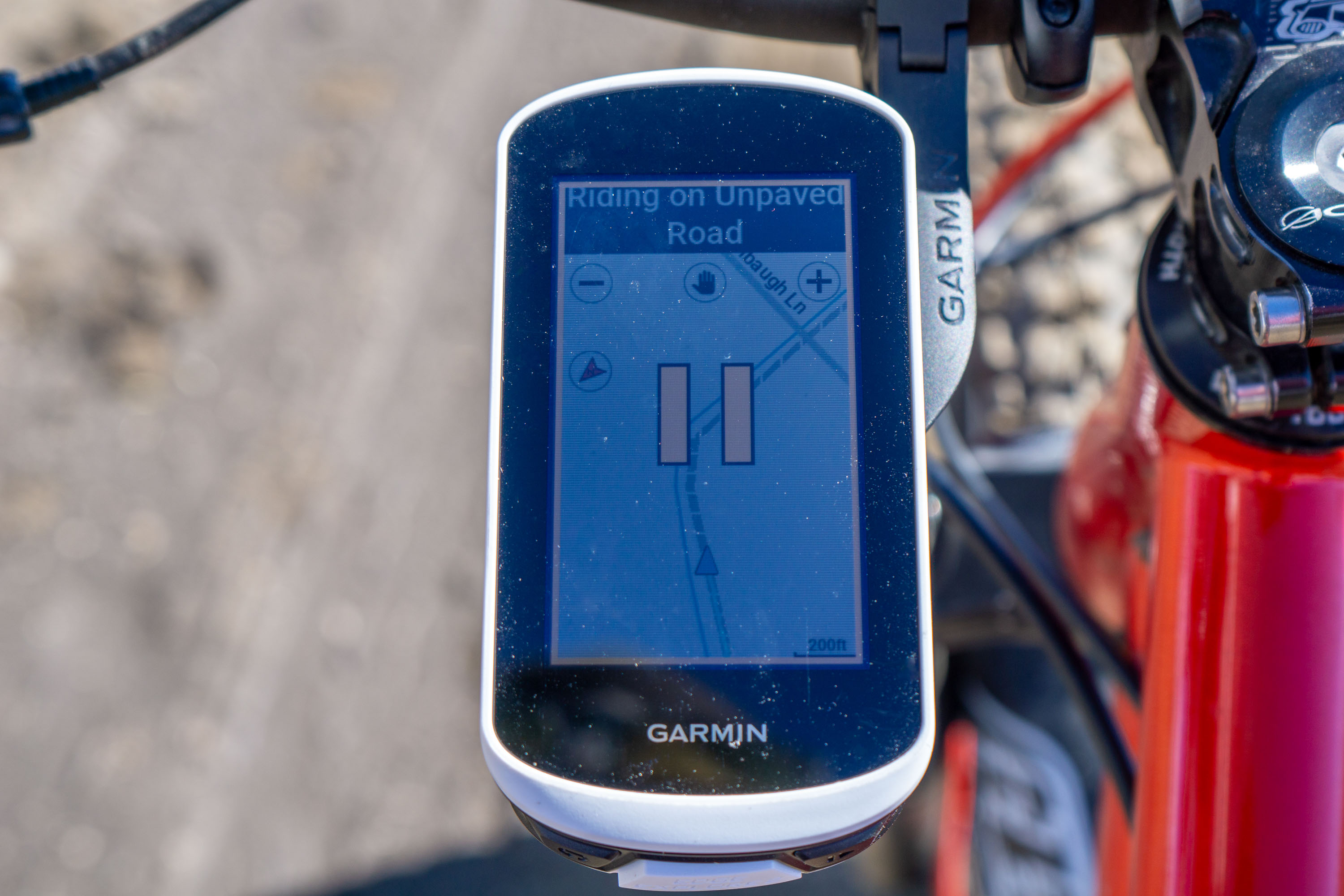
Smartphones vs. Bike Computers
Smartphones these days can be huge. And even though you might not plan on riding in the rain, you need to prepare for it. That means putting a waterproof (and shockproof) case on your phone, making it even larger.
Now imagine your phone: large, heavy, and expensive. Where are you going to put it? There are some great bike phone mounts on the market these days, but your phone is still in a vulnerable position on the bike.
Is your smartphone screen conducive to checking data fields intermittently? Can you read the screen in the bright sun? Do you have a way to call for help if you crash and your phone breaks?
You’ll find the best bike computers to be weatherproof and lightweight. What’s more, even the most expensive models still cost less than the newest smartphones. They are designed to be mounted onto your bicycle with aerodynamic performance as one of their priorities.
The easy-to-read screen on a bike computer won’t leave you squinting to read in the bright sun. Plus, it doesn’t need a waterproof case, so the device’s screen and buttons are user-friendly, even with gloves on.
We think it’s best if your expensive smartphone stays packed safely and not mounted on the front of your bike.
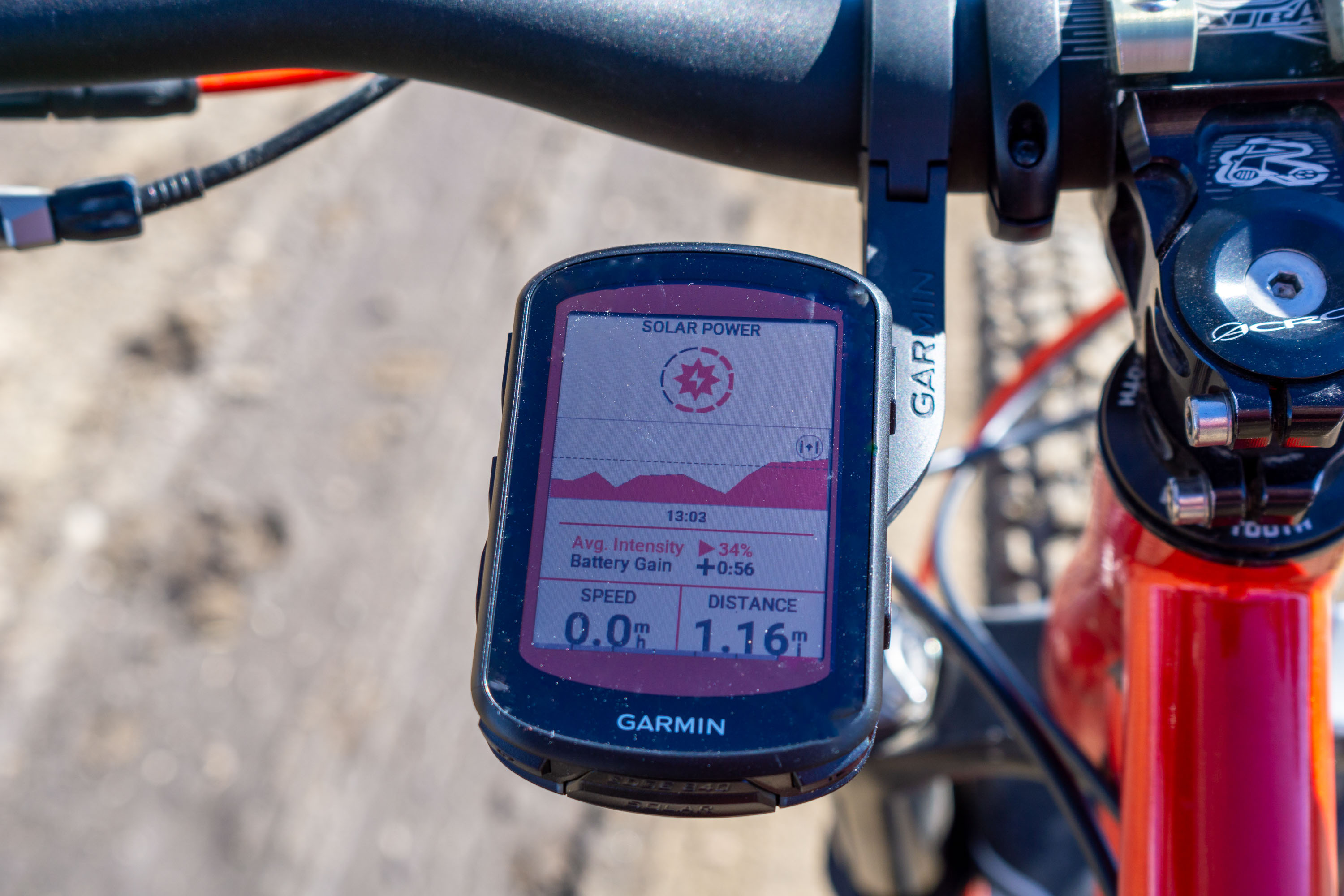
Battery Life
High-quality bike computer batteries are designed to hold up on longer rides or for numerous rides between charges. Most bike computer batteries last around a minimum of 15 hours, even with satellite navigation and ANT+ connections running. Will you ever ride for more than 15 hours in a day? Probably not. Might you need more battery life than that if you’re going on a multi-day bike packing trip, probably.
Before purchasing, consider the type of battery your device will need. Cheaper models like the CatEye Velo 7 use disposable batteries, which aren’t that expensive but produce waste. The majority of GPS bike computers have rechargeable internal batteries.
A relatively new technology used by Garmin on several of its Edge models is Power Glass. This is essentially a solar cell integrated into the computer’s display screen. While it doesn’t actively charge the batteries, Power Glass slows the rate of battery depletion and extends battery life in sunny conditions. The solar feature of the Garmin Edge 1040 Solar boosts the battery out to a claimed maximum of up to 180 hours, which is pretty incredible.
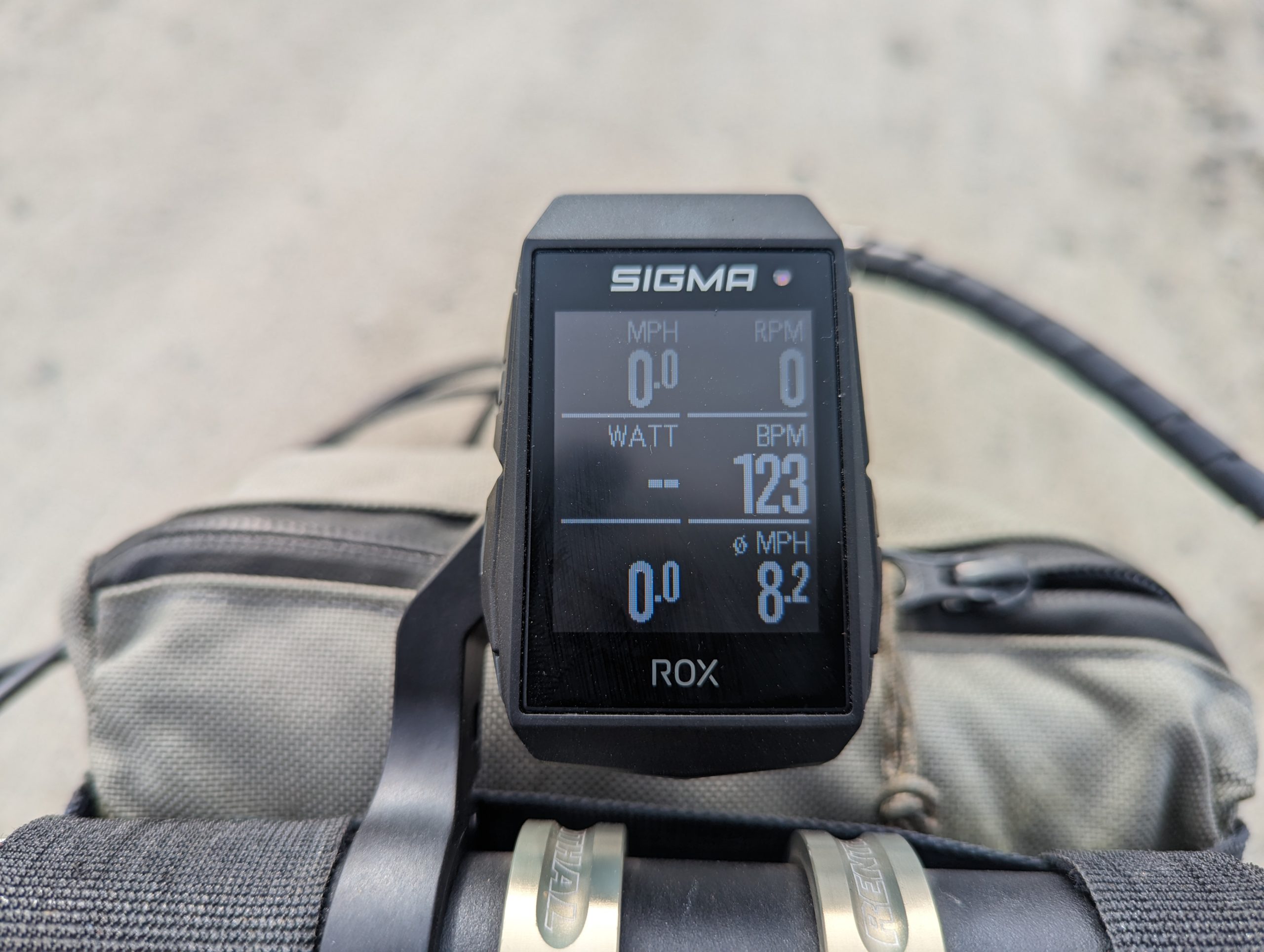
Extra Features
There are a plethora of potential extra features on the best bike computers. For example, you may appreciate the alarm feature on the Garmin Edge 840 Solar if you plan on leaving your bike outside in urban areas. Climbers may appreciate features like Garmin’s ClimbPro and Wahoo’s Summit Segments to notify them of upcoming climbs and provide a climb profile to see better see where they are.
One of the most unique features on any computer we’ve tried is the air sensor and Wahoo Wind Dynamics on the Wahoo ELEMNT Ace. Not only is this computer fully-featured otherwise, but this provides aerodynamic insights that no other computer is capable of.
Also, think about if you’ll want to pair any accessories to your computer. If that’s the case, make sure your computer has ANT+ and Bluetooth connectivity so you can easily track stats like heart rate, power, cadence, and nutrition.
Finally, cyclists who plan to stay connected to friends and family during their ride are sure to enjoy the communication features of some of the more advanced models. Location sharing, crash detection, in-group messaging, and more can help you stay connected while out on rides.
Price & Value
There is an absolutely massive range of prices — between $30 and $700 — among the models included in this guide. Why are some so affordable and others so expensive? We’ll break down the differences in price below.
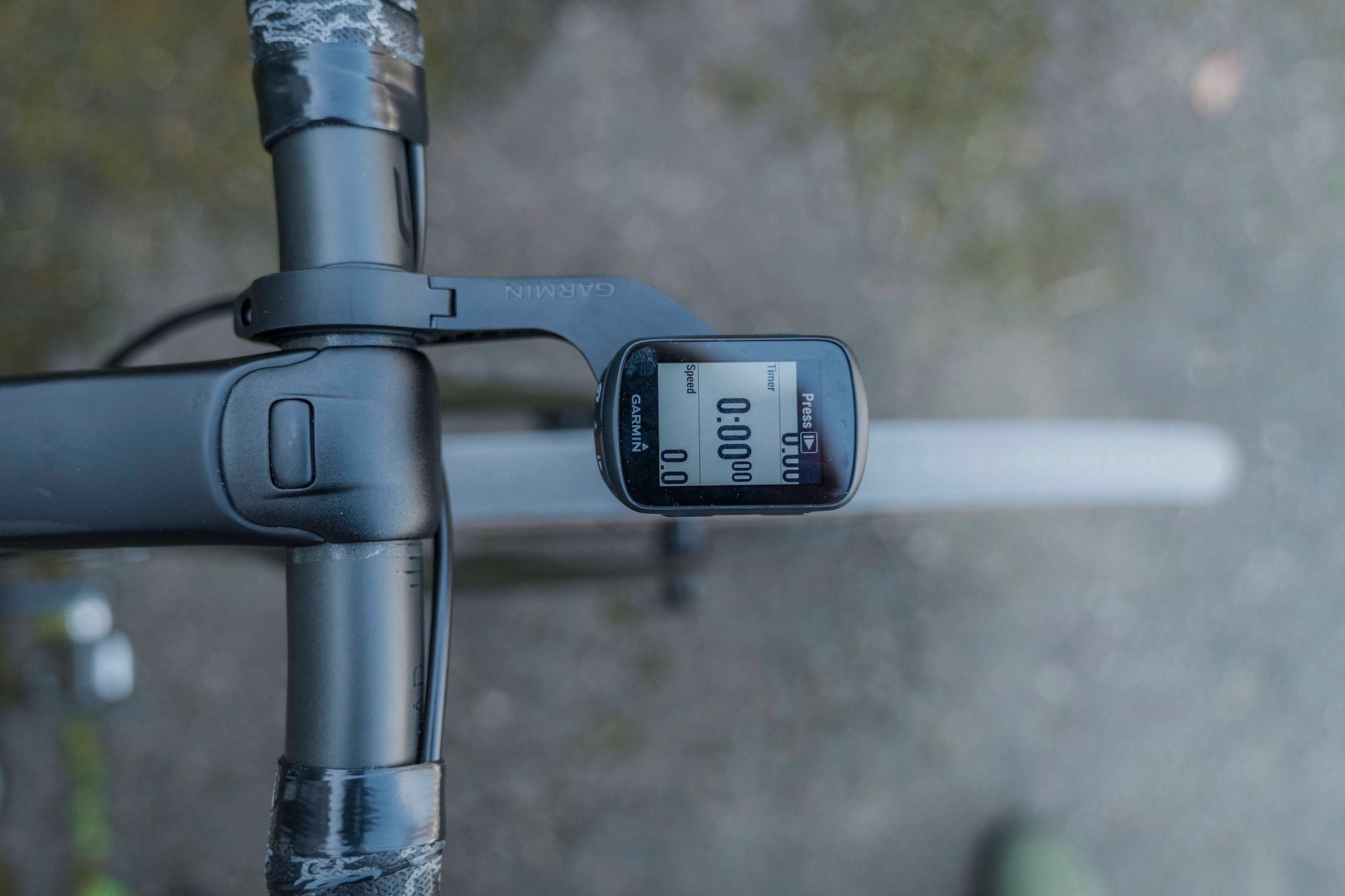
Budget
If you don’t need or want GPS tracking or sensor connectivity, then you don’t need to spend much to get a bike computer that provides the bare-bones basics. If all you’re after is speed, distance, and time, the CatEye Velo 7 ($30) will get the job done. This simple computer hasn’t changed in years, uses a wired wheel sensor, and a small LCD screen. If you’re willing to spend double for the same info, the CatEye Quick ($60) is a serious upgrade in aesthetics and it uses a more user-friendly wireless wheel sensor.
If you’re interested in route tracking, navigation, sensor connectivity, and performance data, the entry-level GPS-enabled bike computers cost $100-200. Some of these computers are nearly on par with much more expensive competitors in terms of functions and features, but they lack in certain areas and are often made by less established brands.
Often, budget-friendly computers have smaller monochrome screens, button interfaces, and less refined finishes. The Garmin Edge 130 Plus ($200) is a fine example. This computer is tiny (and a lot lighter) than its more expensive siblings, has a shorter battery life, a monochrome screen, less robust navigation features, and button controls. Still, it pairs well with sensors and is a perfect fit for riders who simply want to know the basics, track their rides and performance, and upload when they’re finished.
Magene’s C606 ($160) costs even less but has a color touchscreen along with all the connectivity and navigational features most people could ever want. It lags in terms of internal data storage and some peripheral software features, but it’s still a powerful and capable device for the price. Similarly, the Bryton Rider 420E ($130) is impressively functional and accurate, even if it has a monochrome screen and a less polished appearance.
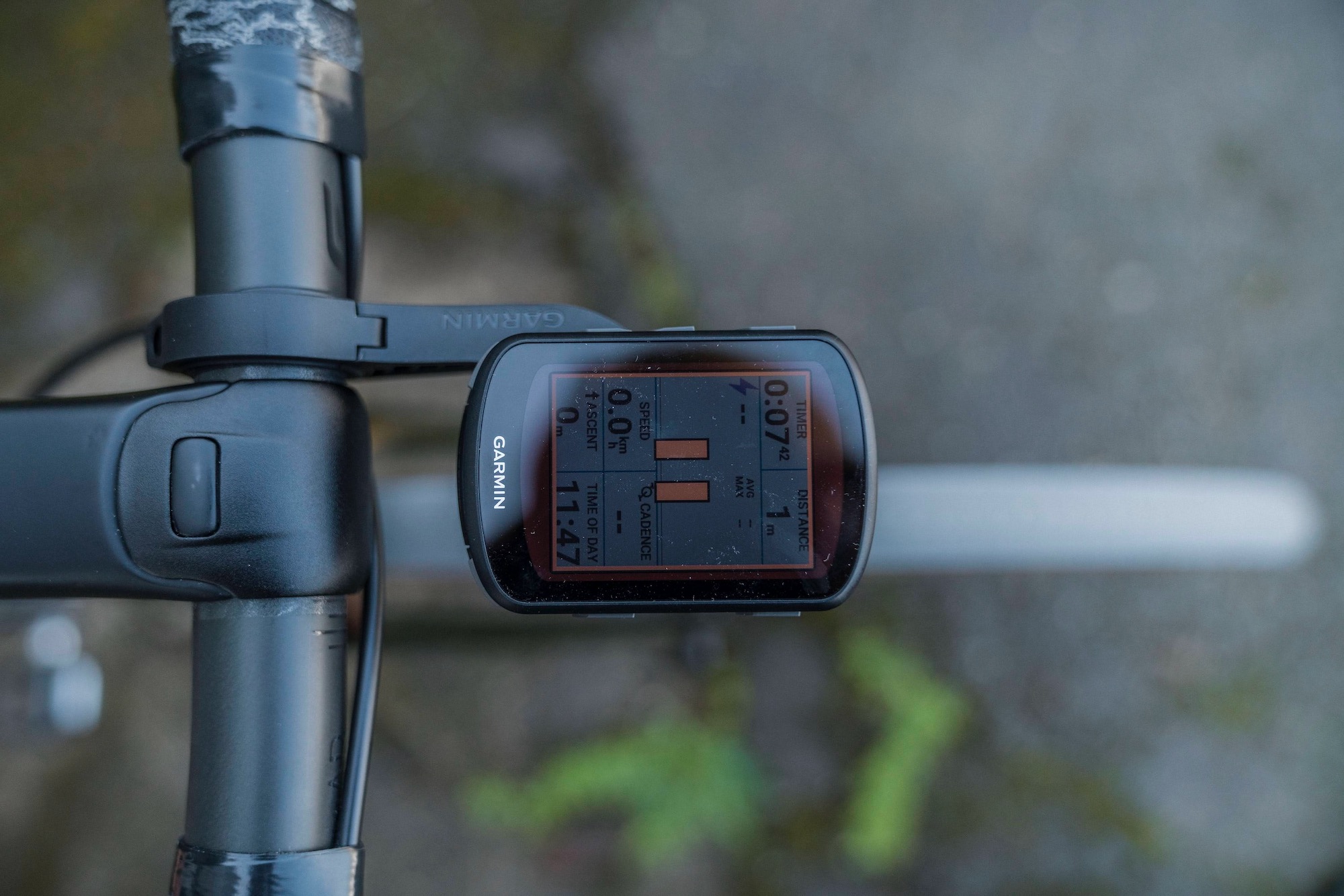
Mid-Tier
Climbing up in the price to the $250 to $400 range, we typically find more advanced computers that have nicer color screens, longer battery life, and enhanced training and navigation features. The Wahoo ELEMNT Bolt V2 ($280) is a standout here for its moderate price, impressive feature set, and user-friendly design.
With a color screen, intuitive button controls, and an awesome companion app, using the Bolt V2 is super easy, yet it has all the sensor connectivity and navigational features as more expensive options, just in a smaller package. Likewise, the Wahoo ELEMNT Roam V2 ($400) works almost the same, but you get a larger screen and a bit more battery life.
In the Garmin world, the Garmin Edge 540 ($350) and 540 Solar ($400) are essentially as function and feature packed as the more expensive Edge 840, but they forego the touchscreen in favor of buttons to keep the price down. Still, these are very powerful training and navigational tools with excellent color screens, mapping, and more performance metrics than you can shake a stick at. They are nearly identical, but the $50 increase for the Solar version gets you Garmin’s Power Glass, which helps extend battery life with the power of the sun.
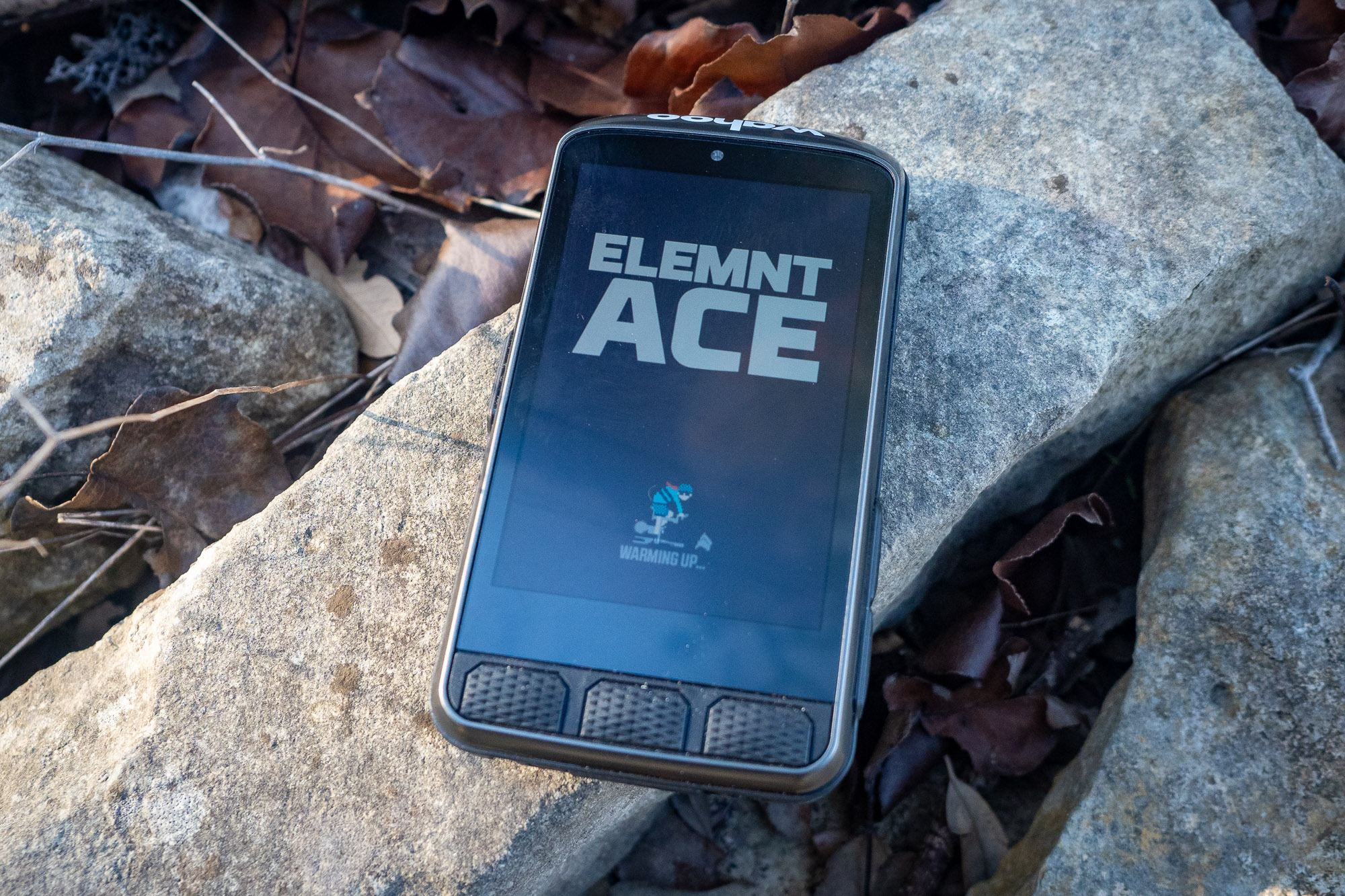
Premium
$400 is already a lot, but once you break that threshold, you get into the high-end of the bike computer market. In general, premium computers don’t necessarily do that much more than their mid-tier counterparts, but they often include touchscreens, larger screens, solar glass, and even greater battery life. In the age of touchscreens, that feature certainly appeals to many, and larger screens can be benefit for navigation or simply just being easier to see.
Take Garmin’s Edge 840 Solar ($500), for example. While it’s similar in size, features, and function to the 540 models described above, it gets a $100 bump in price for the upgrade to a touchscreen that makes it easier to use. The brand new Wahoo ELEMNT Ace ($600) also commands a high price as it’s fully featured for all of your training and navigational needs.
Unlike the Roam and Bolt models, however, it has a larger form factor, a touchscreen, and a longer battery life, along with a first-of-its-kind Aero Awareness feature. While the integrated wind sensor won’t appeal to everyone, it’s easy to see why the Ace costs more than its less expensive siblings.
Similarly, the Garmin Edge 1040 Solar ($700) may not quantify your aerodynamics, but there’s not much else this top-of-the-line computer can’t do. Its large touchscreen makes it easy to see and interpret maps and follow routes, and it syncs up with all of your sensors to make sure you can keep track of all your training data. It’s also got industry-leading battery life, starting at 35 hours, but the Power Glass can extend that significantly in sunny conditions.
Frequently Asked Questions
Bike computers are small electronic devices that mount on a bicycle’s handlebars. There purpose is to display and record various data types about the user’s ride, such as tracking their speed and distance. While they used to be incredibly simple, they have come a long way in the past couple decades and modern bike computers are technological marvels that can be huge benefit for both training and navigation purposes.
Many modern bike computers are quite technologically advanced and they can pair with compatible sensors, including heart rate straps, power meters, and cadence, and can display performance data in real-time on the screen. Professional cyclists and performance-oriented amateurs use this information, to efficiently fine-tune and improve their performance.
A commonly sought-after feature of bike computers is a global positioning system (GPS), which riders use to track their routes and navigate popular or undiscovered routes. With maps, routing, and a host of other navigational features, GPS bike computers can remove the hassle of stopping to deal with a cellphone for directions while riding. They also allow riders to record their routes and upload them to popular training/social apps like Strava.
Bike computers are absolutely worth it if you value the information they provide and actually use the various function they have. When considering which model is right for you, understanding what functions you’re actually going to use can help you narrow down the choices and how much you need to spend. It’s easy to get caught up in all the fancy trianing and navigation capabilites of these devices, but they really only matter if you use them.
For example, you could buy the Garmin Edge 1040 Solar for $700 because it’s the most expensive and, therefore, must obviously be the best. But if you’re only going to record your rides and post them on Strava, then you probably don’t need the myriad training and navigational features and you’d probably be just as happy with the Garmin Edge 130 Plus — and keep $500 in your bank account.
On the flip side, if you’re serious about training or exploring new roads, then spending more for the sensor connectivity, maps, and feature sets of the more advanced models may absolutely be worth it.
With bike computer prices ranging anywhere from $30 to $700 and accommodating every type of rider, there are models to suit every need and budget.
So, you’ve decided you want a cycling computer. But how will you choose the best bike computer to fit your unique needs? Some questions you’ll need to answer to find the best bike computer for you follow:
- What information am I seeking? Will basic information such as time, distance, and riding speed be sufficient?
- Or would I prefer to have more information or connect via ANT+ and Bluetooth devices to monitor heart rate, calories burned, and turn-by-turn navigation?
To answer these questions for yourself, check out the “How to Choose” section of this article.
There are bike computers out there to satisfy all budget levels. You can spend anywhere from $30 for a simple computer like the CatEye Velo 7 to $700 for an advanced model like the Garmin Edge 1040 Solar. When it comes to bike computers, the more money you spend, the more features and functions you get.
Evem then, some of the mid-range computers pack all of the same navigation and trianing functions as the premium-priced compatition, but in a smaller package, or maybe with buttons instead of a touchscreen. Once again, the best bike computer will be different for everyone, so consider what you need.
Using the GPS feature on a bike computer is much more accurate than using a smartphone with GPS. While both devices use basic GPS, smartphone apps analyze data and positioning after it’s uploaded. Conversely, bike computers use GPS and GLONASS to give real-time data.
Additionally, many modern bike computers allow you to upload or program preset routes to follow and provide turn-by-turn prompts and display a map while you ride. This can be very helpful if you’re riding in a new area, as it takes the guesswork out of following a route. For many riders this can be a very useful tool.
These days, the vast majority of bike computers being sold have GPS tracking capability. Of course, not all bike computers have GPS, but not every rider needs or wants it, either.
If you just want the absolute basic information, like, speed, distance, and time, then a super basic computer may serve you perfectly. If you want to record and save your routes to upload them to Strava or a similar app, or if you want to use your computer for navigation, then GPS is necessary to do that.
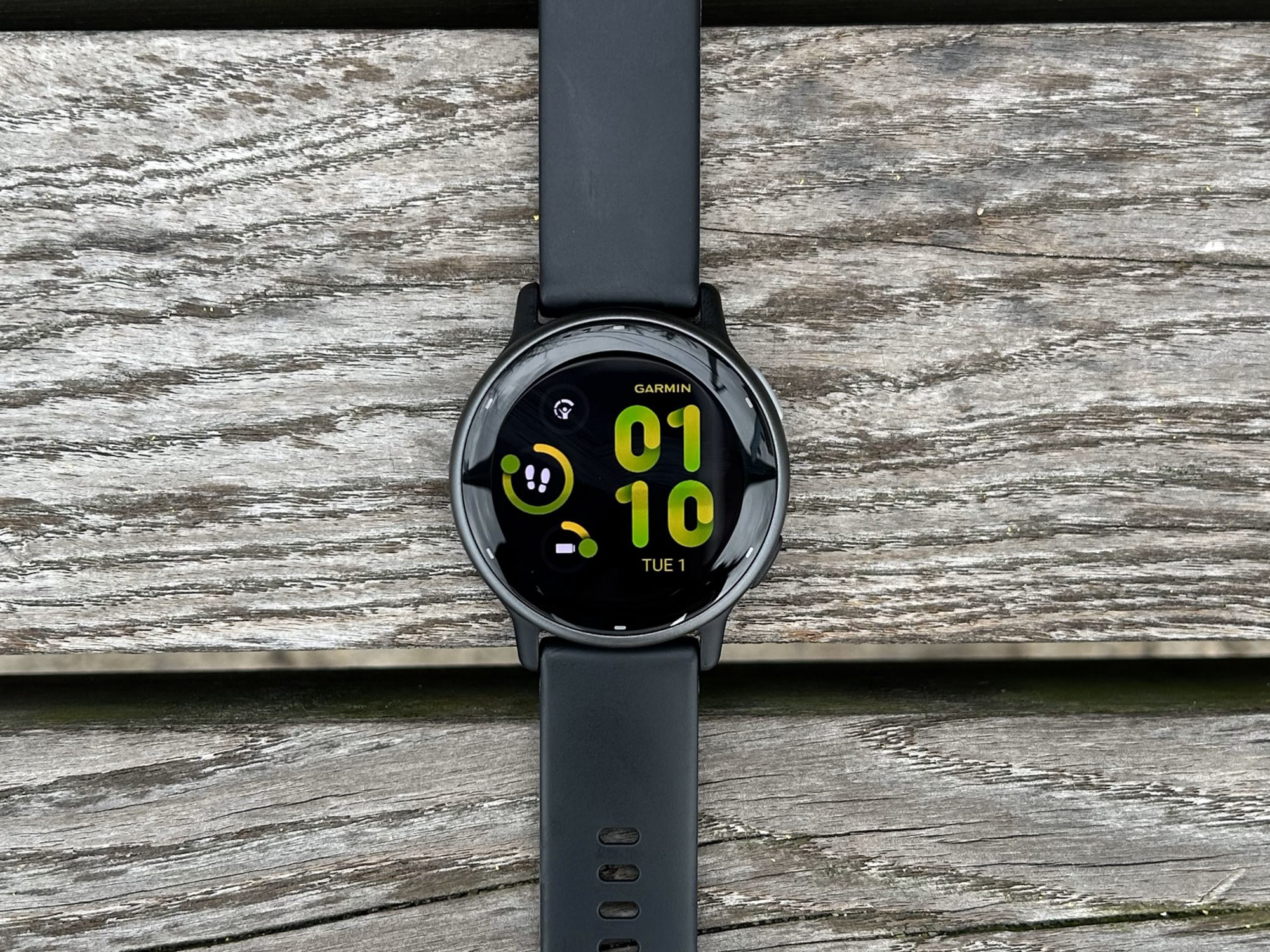
The Best GPS Watches of 2025
GPS watches can aid training, keep you on the right trail, and more. Here are our favorites from Garmin, Suunto, and more!

The Best Smartwatches of 2024
We tested smartwatches from Apple, Samsung, Google, and more to find the best options for every user.
